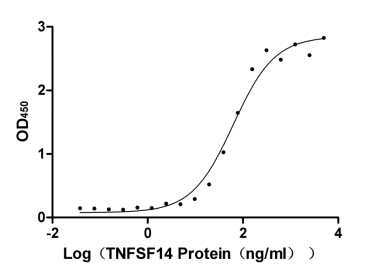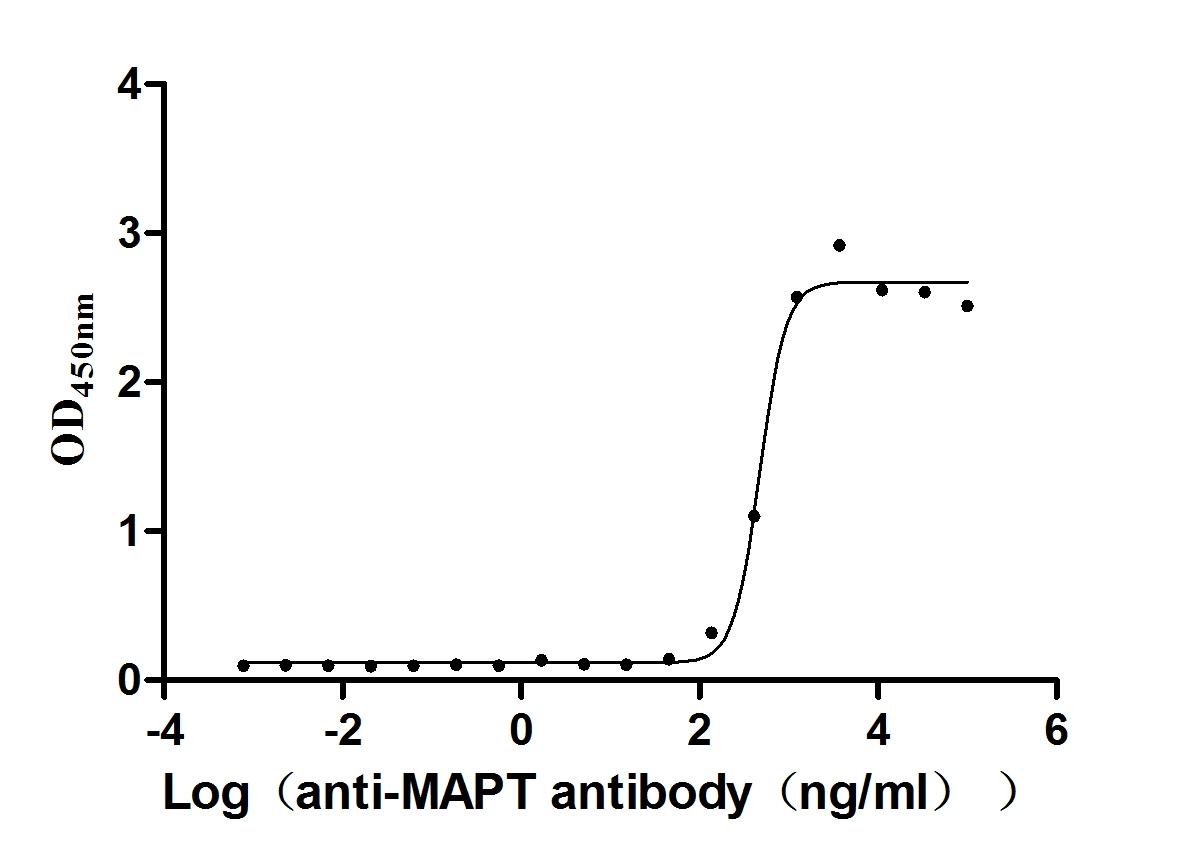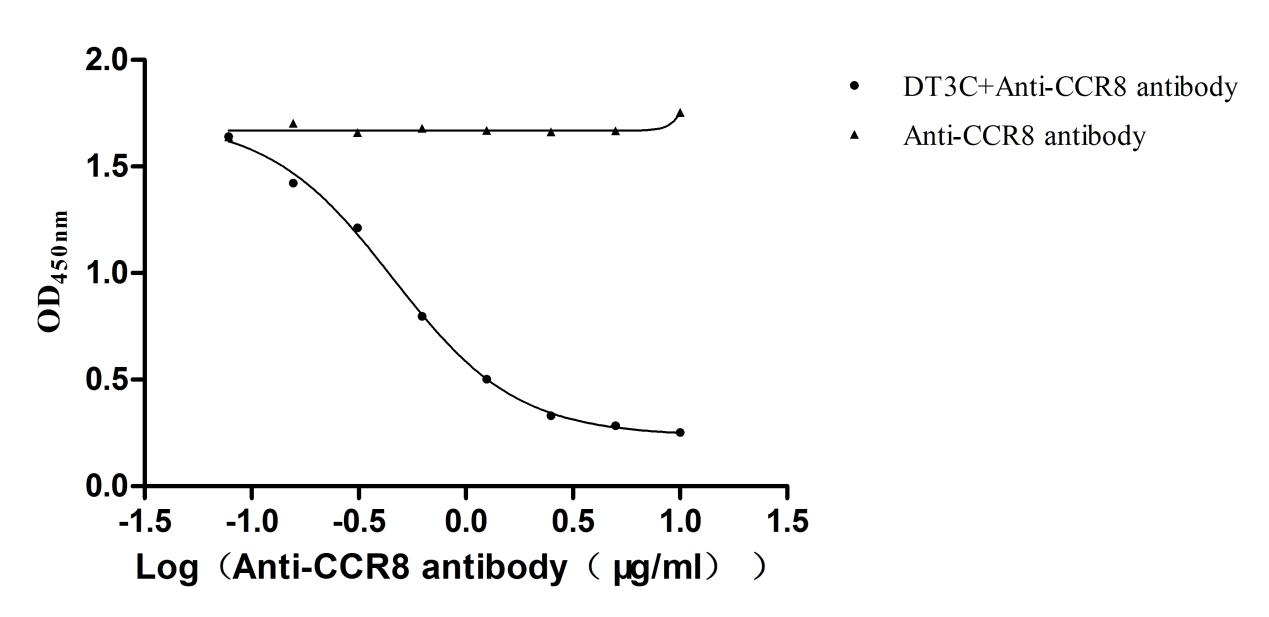Recombinant Mouse Substance-P receptor (Tacr1), partial
-
中文名称:小鼠Tacr1重组蛋白
-
货号:CSB-YP023068MO1
-
规格:
-
来源:Yeast
-
其他:
-
中文名称:小鼠Tacr1重组蛋白
-
货号:CSB-EP023068MO1
-
规格:
-
来源:E.coli
-
其他:
-
中文名称:小鼠Tacr1重组蛋白
-
货号:CSB-EP023068MO1-B
-
规格:
-
来源:E.coli
-
共轭:Avi-tag Biotinylated
E. coli biotin ligase (BirA) is highly specific in covalently attaching biotin to the 15 amino acid AviTag peptide. This recombinant protein was biotinylated in vivo by AviTag-BirA technology, which method is BriA catalyzes amide linkage between the biotin and the specific lysine of the AviTag.
-
其他:
-
中文名称:小鼠Tacr1重组蛋白
-
货号:CSB-BP023068MO1
-
规格:
-
来源:Baculovirus
-
其他:
-
中文名称:小鼠Tacr1重组蛋白
-
货号:CSB-MP023068MO1
-
规格:
-
来源:Mammalian cell
-
其他:
产品详情
-
纯度:>85% (SDS-PAGE)
-
基因名:
-
Uniprot No.:
-
别名:Tacr1; Tac1r; Substance-P receptor; SPR; NK-1 receptor; NK-1R; Tachykinin receptor 1
-
种属:Mus musculus (Mouse)
-
蛋白长度:Partial
-
蛋白标签:Tag type will be determined during the manufacturing process.
The tag type will be determined during production process. If you have specified tag type, please tell us and we will develop the specified tag preferentially. -
产品提供形式:Lyophilized powder
Note: We will preferentially ship the format that we have in stock, however, if you have any special requirement for the format, please remark your requirement when placing the order, we will prepare according to your demand. -
复溶:We recommend that this vial be briefly centrifuged prior to opening to bring the contents to the bottom. Please reconstitute protein in deionized sterile water to a concentration of 0.1-1.0 mg/mL.We recommend to add 5-50% of glycerol (final concentration) and aliquot for long-term storage at -20℃/-80℃. Our default final concentration of glycerol is 50%. Customers could use it as reference.
-
储存条件:Store at -20°C/-80°C upon receipt, aliquoting is necessary for mutiple use. Avoid repeated freeze-thaw cycles.
-
保质期:The shelf life is related to many factors, storage state, buffer ingredients, storage temperature and the stability of the protein itself.
Generally, the shelf life of liquid form is 6 months at -20°C/-80°C. The shelf life of lyophilized form is 12 months at -20°C/-80°C. -
货期:Delivery time may differ from different purchasing way or location, please kindly consult your local distributors for specific delivery time.Note: All of our proteins are default shipped with normal blue ice packs, if you request to ship with dry ice, please communicate with us in advance and extra fees will be charged.
-
注意事项:Repeated freezing and thawing is not recommended. Store working aliquots at 4°C for up to one week.
-
Datasheet :Please contact us to get it.
相关产品
靶点详情
-
功能:This is a receptor for the tachykinin neuropeptide substance P. It is probably associated with G proteins that activate a phosphatidylinositol-calcium second messenger system. The rank order of affinity of this receptor to tachykinins is: substance P > substance K > neuromedin K.
-
基因功能参考文献:
- BoNT/A antinociceptive activity is dependent on integrity of SP/NKA and NK1R. PMID: 28673722
- results indicate the contribution of NK1R signaling in maintaining the homeostasis of the ocular surface under steady-state condition, and that the lack of functional NK1R increases the susceptibility of eyes to develop severe herpes stromal keratitis upon ocular HSV-1 infection PMID: 27798158
- the NK1R-CreER mouse line is a valuable new tool for conditional gene manipulation enabling the visualization and manipulation of cells that express NK1R. PMID: 27712014
- NK1R-/- mice did not exhibit excessive false alarms, compared with wildtypes (response disinhibition) but, as in the 5-Choice ContinuousPerformance Test, they exhibited more perseverative responses throughout the test PMID: 26522842
- NK1R-expressing dorsal horn neurons play a major role in the expression of symptoms of chronic itch. PMID: 25830923
- The results of this study indicated that certain behaviours, disrupted in ADHD, are influenced by an interaction between the BRAS and NK1R, and suggest that ACE inhibitors could provide a novel treatment for this disorder. PMID: 25703442
- the hyperactivity, perseveration and, possibly, inattentiveness of NK1R-/- mice is a direct consequence of a lack of functional NK1R PMID: 25558794
- Arsenic may initiate endothelial dysfunction, resulting in vascular leakage in response to vasoactive agents. PMID: 24448713
- NK1-R expression in the trachea, bronchus, and lung tissue increased in MP-infected BALB/c mice, which may explain why wheezing occurs after MP infection. PMID: 25366726
- The behavioural response of mice lacking NK1r to guanfacine resembles its clinical profile in treatment of ADHD PMID: 25074741
- Together, our findings revealed a critical role of microglial NOX2 in mediating the neuroinflammatory and dopaminergic neurodegenerative effects of SP, which may provide new insights into the pathogenesis of PD. PMID: 25209287
- Both PACAP and SP/NKA, but not NK1 receptors participate in normal motor coordination. PMID: 23499760
- obese-asthma phenotype in mice is accompanied by increased expression of NK1-R on adipose tissues and lung epithelium, reflecting that SP released during inflammation may act directly on these tissues. Blocking NK1-R affects lymphangiogenesis PMID: 23792204
- bone marrow taken from NK-1R deficient mice (Tacr1(-/-)) showed lineage specific B and T cell engraftment deficits compared to wild-type competitor bone marrow cells PMID: 23516556
- Data indicate that NK1R-dendritic cells (DCs) promote cellular immunity that requires IL-12p70. PMID: 23365459
- Data from knockout mice suggest that disruption of NK1R signaling in attention deficit hyperactivity disorder could lead to drug resistance to calcium channel blockers specific for L-type channels. PMID: 22884624
- By activation of the NK1R receptors, it is possible to up-regulate the expression of substance P and NK1R in a protein kinase C, mitogen activated protein kinase, nuclear factor kappa b dependant pathway. PMID: 22040127
- male TACR1 (-/-) mice exhibited blunted approach behavior toward females following the initial interaction compared with C57BL/6 mice. NK-1R signaling may therefore play an important role in pheromone-induced sexual behavior. PMID: 22471406
- This review presented that the NK-1 RECEPTOR knockout mice show a correlation between 5-HT firing rate and PMID: 23089640
- The present studies indicate that alterations in substance P/NK1 receptor system underlie, at least in part, the behavioural and monoaminergic changes in this animal model of depression. PMID: 22155476
- These results indicate that deletion of the NK1 receptor does not alter behavioural susceptibility to chronic repeated stress in mice, but accelerates adaptation of the HPA axis. PMID: 22019828
- assessed the effects of substance P on weight gain in response to a high-fat diet and determined glucose metabolism in Tac1-deficient (Tac1(-/-)) mice PMID: 22009727
- Methamphetamine induces trafficking of striatal neuokinin-1 receptor which is dependent on the activity of dopamine D1 and D2 receptors. PMID: 20730802
- Knockdown of the NK-1R gene in bile duct ligated (BDL) mice induces a decrease in the number of large cholangiocytes (associated with enhanced biliary apoptosis) compared with BDL wild-type mice. PMID: 21596993
- In addition to locomotor hyperactivity, NK1R-/- mice express inattentiveness, perseveration and impulsivity in the 5-choice serial reaction-time task. PMID: 21408181
- results suggest that cigarette smoke produces alveolar macrophages' NK1R overexpression primarily by both promoting neurogenic substance P (SP) release and synergizing NK1R response to neurogenic SP largely via activating NF-kappaB pathway PMID: 20426532
- our proposal that NK1R-/- mice offer a mouse model of ADHD was borne out by our human studies, which suggest that DNA sequence changes in and around the TACR1 gene increase susceptibility to this disorder PMID: 19204064
- Substance P receptor mediated macrophage responses. PMID: 11727773
- substance p-induced bladder inflammation was mast cell dependent and did not require NK1R expression on the mast cell PMID: 12217852
- splenocytes and granuloma cells from neurokinin-1 receptor knockout mice made less interferon-gamma and IgG2a PMID: 12388184
- Loss of NK1 receptors has little effect on chemoreceptor function in the mouse, and thus they play, at best, a minor role in the hypoxic chemoreception process. PMID: 12473075
- Increased respiration after hypoxia was unchanged in NK1-/- neonates but was weaker in adult NK1-/- mice. NK1 receptors aren't needed for prenatal development of the respiratory network or for increased breathing by short-lasting hypoxia in neonates. PMID: 12492418
- increased NK-1 receptor gene expression contributes to the development and maintenance of a hyperalgesic state PMID: 12535787
- Genetic elimination of substance P receptors in mice results in an increased gamma-herpesvirus burden and an altered host response. PMID: 12594288
- Tachykinin NK1 receptor genes are expressed in uterine cells, oocytes, ovaries and embryos from mice, and may play a role in female reproductive function. PMID: 12773411
- protease-activated receptor 2 agonists induced a contraction of murine intestinal smooth muscle that was mediated by nerves and requires both neurokinin 1 and 2 receptors PMID: 12801882
- Restraint stress results in increased dura mater mast cell activation in C57BL mice, but not in neurokinin (NK)-1 receptor knockout mice; stress triggers mast cell activation in dura mater through the activation of NK-1 receptors. PMID: 12867261
- Increased time-dependent expression of the NK1 receptor occurs on bone marrow mast cells after coculture with the cytokines IL-4 and/or stem cell factor and is of functional relevance for the activation of mast cells. PMID: 12902513
- These observations suggest that the amygdala is an important area for the effects of substance P and the NK1 receptor in the motivational properties of opiates, as well as the control of behaviors related to anxiety PMID: 12967989
- NK1 receptors are important in the accurate intensity coding of suprathreshold stimuli. PMID: 14614952
- In an inflammatory model of complete Freund's adjuvant-induced hyperalgesia, substantial reductions in swelling, histological outcome and mechanical hyperalgesia are observed in mice lacking the NK-1 receptor. PMID: 14625445
- Deletion of tachykinin NK1 receptor gene does not alter respiratory network maturation but alters respiratory responses to hypoxia. PMID: 14635705
- Time-limited overexpression of neurokinin-1 receptors in mucosal repair tissue of corpus and antrum. Neurokinin-1 receptors may be involved in gastric wound healing. PMID: 14988833
- peripheral nerve injury increases the expression of substance P (NK-1) receptors in the spinal cord dorsal horn; this is correlated with heat hypersensitivity. PMID: 15042514
- NK-1R and NK-2R have important but differential roles in the regulation of cutaneous inflammatory responses PMID: 15084523
- a significant higher number of corporra lutea in the NK1-R deficient mice in comparison to the wild-type group. PMID: 15236323
- We found NK1 receptors in dopaminergic amacrine cells, indicating that SP neurotransmission may be a universal feature of the circuitry of the dopaminergic amacrine cell. PMID: 15381281
- Effect of receptor expression on mast cell development and their association with mast cells in stomach and bladder tissues. PMID: 15458971
- Activation of NK1 receptors is involved in the maintenance of the inhibitory tone of substantia gelatinosa interneurons. PMID: 15494183
- Separate distributions and the postnatal changes in SP and NK1R suggest the possibility of another nociceptive afferent transmission mechanism, that is, volume transmission, in the Vc other than synapse-mediated transmission. PMID: 15763273
收起更多
-
亚细胞定位:Cell membrane; Multi-pass membrane protein.
-
蛋白家族:G-protein coupled receptor 1 family
-
数据库链接:
KEGG: mmu:21336
STRING: 10090.ENSMUSP00000032122
UniGene: Mm.8055




















